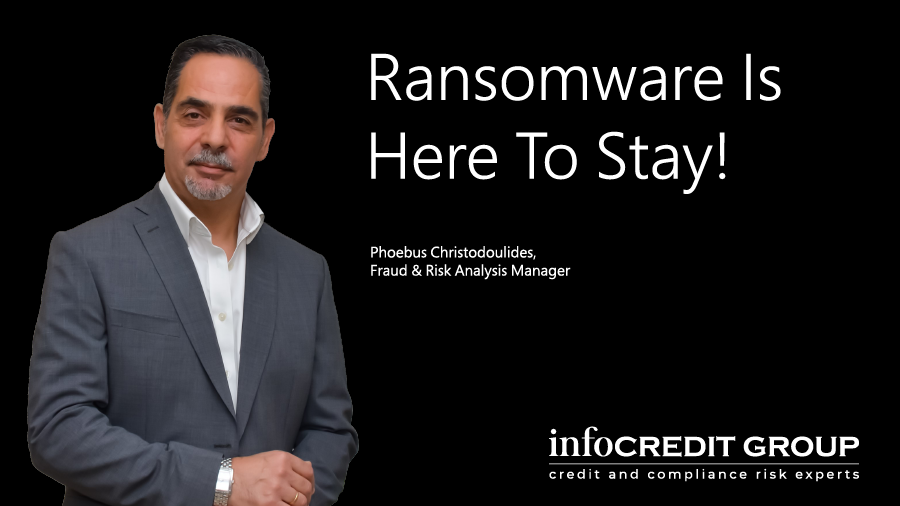
The increasing Ransomware attacks these days are not news anymore. Moreover, the worst is yet to come, as this phenomenon is here to stay. So, get prepared and be on the alert.
Ransomware is not just another malicious software; it can be designed to cause material damage to a server or a computer network but can also extend to severe legal and reputational damages. It aims to encrypt, corrupt, or steal data, and in exchange, a ransom in untraceable Bitcoins will be requested for restoring everything back to normal.
Evidently, ransomware has become a ferocious cybersecurity threat which affects businesses, government organizations and often individuals. The greater a targeted organization is, in terms of importance and/or wealth, the bigger the ransom will be requested. No one can deny that ransomware can cause terror to an organization’s business growth, or to its profitability and security, thus criminals are viewing these type of attacks as a lucrative way of achieving financial gain, given the rate of success.
The ransomware cost the world over $20 Billion in 2021 and by 2031 it is expected to rise to $265 Billion. Take note of the focus on small and medium-sized businesses (SMEs), which are becoming popular targets. This is attributed to the best likelihood of being paid for ransomware attacks, since SMEs often can’t afford the downtime and choose the paying of ransom as the fastest way to recover.
An interesting statistic, and a driver for criminals, is that 50% of businesses are not successful in recovering their own data using backup. Also, another attractive driver is that over 40% of victims are eventually prompted to pay the ransom, even though in return 70% of them will get back what they paid for. However, viewing the ‘greatness’ of 70%, it is indicative that cybercriminals are joining forces in an alliance to embrace the flow of payments towards their ecosystem, by honoring their deals.
Moreover, as one would expect, hackers and cybercriminals also share affiliate deals through the Dark Web, like Ransomware as a service (or RaaS), where a ransomware group licenses out their ransomware program for use by another criminal party.
In terms of the costs raised by ransomware attacks, organizations may not only face the cost of paying the ransom but also the expenses associated with, such as investigating the incident, recovering data, improving security infrastructure, and any potential legal liabilities. Let’s not forget the significant business disruptions and loss of revenue due to downtime.
As for the data loss, ransomware attacks can result in the loss of critical data if victims refuse to pay the ransom or when an organization is unable to restore their files from backups. In some cases, even if the ransom is paid, there is no guarantee that the attacker will decrypt or return the data, and if so, it may not be complete integrity wise or could be corrupted.
Regarding ransomware attacks on individuals, personal computers, smartphones, and other devices, can also be targeted thus resulting in the loss of personal data, photos, financial records, and other valuable information. Victims may suffer emotional distress and financial losses if they fall prey to these attacks.
It is not an understatement that ransomware attacks have become more sophisticated over time, employing advanced encryption algorithms and evasive techniques to bypass security measures. Attackers, more than ever before, use social engineering, phishing emails, or exploit software vulnerabilities to gain their initial access to a system, infiltrate the Control Capture and then head on to the Data Servers. Social engineering has become a major area of concern, as in view of security systems growing stronger to withstand hacking attacks, fraudsters found ways to infiltrate through people’s weaknesses.
The most reported ransomware families in quarter one of 2021 are by 14.2% the Sodinokibi/REvil , Conti V2 by 10.2% and Lockbit by 7.5%. And how easy it is to install such ransomware? Well, don’t imagine hostile USB sticks or so much vulnerability exploitations, as the main method is through phishing emails and compromised websites. Such attacks are very effective in the absence of proper cybersecurity culture and peoples’ fraud awareness.
In a nutshell, the 10 actionable items against ransomware are:
- Regularly update software and operating systems.
- Keep malware detection tools updated.
- Backup data regularly and store backups offline, or in secure cloud storage, with frequent restoration tests.
- Limit data access to those who need it.
- Continuously educate and test users against social engineering techniques.
- Use strong and unique passwords, including multi-factor authentication.
- Prepare for the impact of legal and regulatory implications, especially on data protection and privacy laws.
- Report the attack, to law enforcement agencies and GDPR regulatory bodies, and break the chain so others don’t fall into the trap.
- Ensure presence of a solid incident response plan, with trained teams, escalation instructions and a well-defined communication protocol.
- Documenting the lessons learned from an attack is a must.
While recognizing the criticality of this subject and the importance of security awareness, Infocredit Group facilitates customized seminars that aim to set the proper security culture to any individuals and company employees.
Infocredit Professional Education will be hosting a series of cybersecurity seminars starting from September. These seminars will explore the dynamic world of cyber threats and acquire practical strategies to safeguard your business.
Our expert instructors, who possess extensive experience in the field of cybersecurity, will cover a wide range of topics. By attending these seminars, you will gain invaluable insights and practical skills to enhance your organization's security posture. Seminar dates, venue and registration information will be shared in the coming weeks. Together, let's strengthen our defenses against cyber threats and ensure the safety of your valuable data.
For further information regarding the cybersecurity seminars please visit click here





